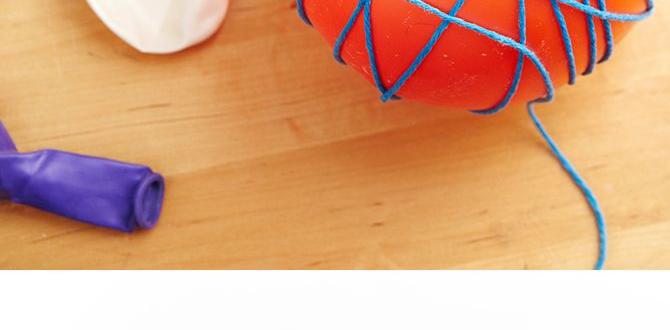Quick Summary:
A jammed nailer trigger can usually be reset by identifying the cause, clearing obstructions, and ensuring proper nail loading. Follow these simple steps to get your nailer working again quickly and safely.
Ever been right in the middle of a project, full of momentum, only for your nail gun to refuse to fire? That frustrating moment when you squeeze the trigger and… nothing happens. It’s a common issue, especially for those new to using nailers. But don’t worry! Most of the time, a stuck or unresponsive trigger on your nailer isn’t a sign of a major problem. It’s usually something simple that you can fix yourself with a few basic steps. This guide will walk you through exactly how to reset your nailer’s trigger, saving you time and frustration. We’ll cover common causes, easy fixes, and important safety tips so you can get back to building with confidence.
Table of Contents
Understanding Your Nailer’s Trigger Mechanism
Before we dive into fixing it, let’s quickly touch on how your nailer’s trigger works. Most pneumatic and electric nailers have a safety mechanism built into the trigger. You typically have to press the safety tip (also called the contact trip or nose probe) against the surface you’re nailing, and then pull the trigger. This two-step process prevents accidental firing.
Sometimes, this mechanism gets stuck. This can happen due to a few reasons:
- A misfed nail jamming the firing pin or trigger assembly.
- Dirt, debris, or lubricant buildup.
- Damage to the trigger components.
- Low air pressure (for pneumatic nailers).
- A dead battery (for cordless nailers).
Understanding these potential culprits is the first step in our reset process.
Safety First: Always Prioritize Safety!
Working with power tools, especially nail guns, requires caution. Before you attempt any reset or troubleshooting, always follow these crucial safety steps:
- Disconnect Power: For pneumatic nailers, disconnect the air hose. For electric or battery-powered nailers, remove the battery pack or unplug the tool. This is non-negotiable for preventing accidental firing.
- Clear the Magazine: Remove all nails from the nailer’s magazine/feeder.
- Wear Safety Glasses: Always wear ANSI-approved safety glasses to protect your eyes from flying debris.
Once you’ve followed these safety precautions, you’re ready to start troubleshooting.
Common Reasons Your Nailer Trigger Won’t Reset
Let’s break down the most frequent culprits behind a trigger that seems stuck or won’t reset. Knowing these will help you pinpoint the issue faster.
1. Jammed Nail
This is by far the most common reason for a nailer to stop working. A nail can jam:
- Inside the firing chamber.
- Partially sticking out of the nose.
- Misaligned in the feeder mechanism.
A jammed nail can prevent the firing pin from retracting or the trigger linkage from moving freely.
2. Low Air Pressure (Pneumatic Nailers)
Pneumatic nailers rely on compressed air to drive nails. If your air compressor isn’t providing enough pressure, the nailer might not have the force to fully cycle the mechanism. This can sometimes manifest as a trigger that feels sluggish or won’t reset.
Consult your nailer’s manual for the recommended operating pressure, often found in PSI (pounds per square inch). A good rule of thumb is to ensure your compressor regulator is set to the manufacturer’s recommended PSI, usually between 70-120 PSI depending on the nailer.
3. Depleted Battery (Cordless Nailers)
For cordless nailers, a low or dead battery is an obvious reason it won’t function. Sometimes, even if the lights are on, the remaining charge might not be enough to power the firing mechanism. Try a fully charged battery.
4. Debris or Lack of Lubrication
Over time, dust, wood shavings, or old lubricant can gunk up the internal workings of your nailer. This buildup can impede the movement of the trigger, firing pin, or other crucial components, making them stick.
5. Trigger Mechanism Issues
Less commonly, there might be an issue directly with the trigger assembly itself. This could be a broken spring, a bent lever, or a component that has simply worn out with use.
Step-by-Step Guide: How to Reset Your Nailer Trigger
Now that we understand the potential problems, let’s get your nailer back in action. Follow these steps methodically.
Step 1: Power Down and Safety Check
As mentioned in the safety section, this is paramount.
- Pneumatic: Unscrew the air hose from the nailer’s coupler.
- Cordless: Remove the battery pack.
- Electric (Corded): Unplug the power cord.
- Clear Nails: Open the nail magazine and remove any remaining nails.
This step ensures that even if the trigger is accidentally activated, no nail will be fired.
Step 2: Inspect the Nose Probe (Contact Trip)
The nose probe at the tip of the nailer is what you press against the material to be nailed. It’s often the first point of contact and can get stuck if it’s dirty or jammed.
- Gently push and pull the nose probe in and out.
- Look for any visible debris, wood fragments, or bent metal.
- If you see any obstructions, carefully try to remove them with tweezers or a thin, non-metal tool. Avoid using anything sharp that could damage the probe.
Step 3: Address a Jammed Nail
If you suspect a nail jam, this is where you’ll need to be thorough.
Locating the Jam:
- Look into the nose of the nailer. Can you see a nail stuck?
- Check the nail feed path. Sometimes, you can slide open or remove parts of the feeder mechanism to get better access. Consult your nailer’s manual if you’re unsure how to do this.
Removing the Jammed Nail:
- Use Pliers: If a nail is protruding slightly, use a pair of needle-nose pliers to gently grip it and pull it straight out.
- Access the Firing Chamber: Many nailers have a panel or cover that allows access to the firing chamber from the front. You might need a screwdriver to open this. Once open, you should be able to dislodge the jammed nail.
- Tapping Method (Use with caution): Sometimes, a gentle tap can free a stubborn nail. Hold the nailer firmly and give the nose a sharp but controlled tap against a piece of scrap wood. Be careful not to pound it, as this can cause damage.
- Manual Driver: Some nailer kits come with a small tool to manually push a jammed nail out if it’s deep inside.
Tip: When removing a jammed nail, always try to pull it out in the same direction it was intended to be driven. This helps prevent bending or breaking internal components.
Step 4: Check Air Pressure or Battery
For Pneumatic Nailers:
- Reconnect the air hose.
- Turn on your air compressor.
- Check the regulator gauge to ensure it’s set to the manufacturer’s recommended PSI for your nailer. A common range is 70-120 PSI, but always refer to your tool’s manual.
- If the pressure is too low, increase it.
For Cordless Nailers:
- Ensure you have a fully charged battery inserted.
- If you have multiple batteries, try a different one.
Step 5: Test the Trigger
With the power disconnected (air hose off, battery out, unplugged), gently squeeze the trigger. Does it feel looser? Does it move more freely?
If it still feels stiff, try applying a small amount of
specifically designed for tools to the trigger assembly area. Allow it to penetrate for a few minutes, then wipe away any excess. Some manufacturers recommend specific lubricants for their tools; check your manual.
Step 6: Reassemble and Test Firing
Once you believe the jam is cleared and the trigger mechanism is free:
- If you removed any access panels to clear a jam, resecure them.
- Load a few nails into the magazine.
- Crucially: Place the nose of the nailer against a scrap piece of wood.
- Reconnect the power source (attach air hose, insert battery, or plug in).
- Now, squeeze the trigger. If everything is working correctly, you should hear the nailer fire and feel the driver blade engage.
- Test fire a few more nails to ensure consistent operation.
Troubleshooting Specific Nailer Types
While the general principles apply to most nailers, there are slight variations:
Pneumatic Nailers
These are the workhorses, driven by compressed air. Issues often relate to:
- Air Leaks: Check your hoses, fittings, and the nailer’s O-rings for any signs of air escaping. Leaks can reduce the power needed for the trigger to reset or fire properly. For more on troubleshooting air leaks, the National Institute for Occupational Safety and Health (NIOSH) offers guidance on workplace safety for compressed air that can indirectly relate to tool maintenance.
- Couplers and Hoses: Ensure your quick-release coupler isn’t faulty or clogged.
Cordless Battery-Powered Nailers
These offer freedom from hoses but rely heavily on their power source.
- Battery Health: Older batteries may not hold a charge sufficiently. If your nailer starts acting up and the battery is several years old, consider a replacement.
- Motor Issues: If you’ve ruled out battery and jams, the electric motor itself might be the issue, which often requires professional repair for advanced DIYers.
Electric (Corded) Nailers
These are straightforward but can suffer from:
- Damaged Cords: Inspect the power cord for any nicks, cuts, or kinks.
- Internal Switches: Like cordless models, internal electrical components can fail.
Preventative Maintenance for a Smooth-Triggered Nailer
The best way to avoid trigger issues is to keep your nailer in good condition. Here’s how:
- Regular Cleaning: After each use, wipe down your nailer. Pay attention to the nose area and the trigger.
- Lubricate (If Recommended): Check your manual. Some nailers require periodic lubrication of specific points. Use only the recommended lubricant. Over-lubricating can attract more dirt.
- Proper Storage: Store your nailer in a clean, dry place, away from extreme temperatures and moisture.
- Use Quality Nails: Always use the correct size and type of nails recommended for your specific nailer. Poor quality or incorrect nails are a prime cause of jams.
- Air Filter Maintenance (Pneumatic): If you have a filter on your air line, ensure it’s clean. A dirty filter can restrict air flow. For essential information on maintaining pneumatic tools and systems, resources from organizations like the Pneu-Logic group can be invaluable.
By following these maintenance tips, you’ll significantly reduce the chances of encountering a stuck trigger and extend the life of your tool.
When to Call a Professional
While most nailer trigger issues are DIY-friendly, there are times when you might need expert help:
- Persistent Jams: If you’ve tried all the clearing methods and still can’t remove a jammed nail, there might be internal damage.
- Damaged Components: If you notice bent metal, broken plastic, or other obvious signs of physical damage to the trigger or firing mechanism.
- No Firing After Checks: If you’ve confirmed power, cleared jams, and the nailer still won’t fire, it could be a more complex internal failure.
- Unsure About Disassembly: If you’re not comfortable taking apart internal parts of your nailer, it’s best to seek professional service rather than risk further damage.
Contacting the manufacturer or a certified tool repair shop is your best bet for these situations.
FAQ: Your Quick Nailer Trigger Questions Answered
Q1: My nailer trigger is stuck. What’s the very first thing I should do?
A1: Always start by disconnecting the power. For air nailers, unplug the air hose. For cordless, remove the battery. For corded electric, unplug it. Then, remove any nails from the magazine. This ensures safety.
Q2: How do I know if my trigger is stuck because of a jammed nail?
A2: Look for a nail sticking out of the nose, stuck in the firing chamber, or partially protruding from the magazine feed. The trigger might also feel unusually stiff or won’t move at all.
Q3: Can I use WD-40 to fix a sticky nailer trigger?
A3: It can help lubricate external parts, but check your nailer’s manual first. Some manufacturers advise against certain lubricants as they can attract dust or degrade seals. If you use it, ensure it’s a tool-specific lubricant or a light penetrating oil and wipe off any excess.
Q4: My pneumatic nailer won’t fire, and the trigger feels loose. Is it a trigger issue?
A4: A loose trigger that doesn’t fire often indicates low air pressure. Check your air compressor’s regulator and ensure it’s set to the recommended PSI for your nailer. A faulty coupler or air leak could also be the culprit.
Q5: How often should I lubricate my nailer trigger?
A5: This depends on the nailer type and manufacturer recommendations. Many modern nailers require very little lubrication. Some pneumatic models might benefit from a few drops of oil in an air fitting occasionally, while others are maintenance-free. Always refer to your owner’s manual.
Q6: Is it safe to tap my nailer to unjam a nail?
A6: A gentle tap on a hard surface with the nose of the nailer can sometimes dislodge a stubborn nail. However, avoid hard pounding, as this can damage the tool. If the nail is deeply jammed or wedged, a gentle tap might not be enough, and further disassembly might be needed.
Q7: My nailer worked fine, but now the trigger won’t reset after firing. What could be wrong?
A7: This often points to a problem with the internal return spring for the firing pin or the trigger linkage. It could be due to a jam that wasn’t fully cleared, debris inside the mechanism, or a worn-out internal part. Thoroughly re-check for jams and clean the interior if possible.
Conclusion
Dealing with a non-responsive nailer trigger can be a real project stopper, but as we’ve seen, it’s usually a fixable problem. By diligently following the safety precautions, identifying the root cause—whether it’s a jammed nail, low air pressure, a dead battery, or some debris—and performing the step-by-step reset procedure, you can get your nailer back to its reliable performance. Remember that regular, simple maintenance is your best defense against future issues, keeping your tools in top shape for all your DIY adventures.
Don’t let a stubborn trigger get you down. With this guide, you’re equipped to tackle the most common issues and get back to building, crafting, and creating with confidence. Happy nailing!



